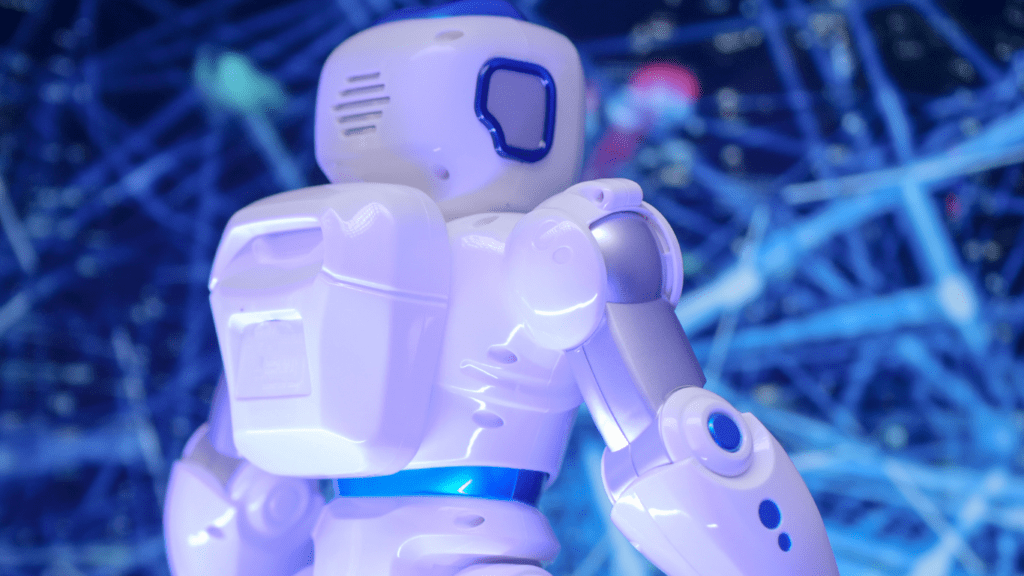In today’s interconnected world, the fusion of Internet of Things (IoT) and Artificial Intelligence (AI) is revolutionizing the way devices communicate and operate. As an expert in the field, I’ve witnessed firsthand the transformative power of integrating AI into IoT networks. By leveraging AI algorithms, IoT devices can analyze vast amounts of data in real-time, leading to more efficient decision-making and predictive capabilities.
In this article, I’ll delve into the exciting synergy between IoT and AI, exploring how AI enhances the functionality and security of IoT networks. From optimizing energy consumption in smart homes to enhancing predictive maintenance in industrial settings, the possibilities are endless when AI meets IoT. Join me as we uncover the endless possibilities of enhancing IoT networks with the intelligence of AI.
Overview of IoT Networks and Artificial Intelligence
Exploring the convergence of IoT networks and Artificial Intelligence (AI) unveils a realm of unprecedented possibilities. When IoT devices are imbued with AI capabilities, they gain the prowess to process and interpret data instantaneously. This collaboration empowers IoT networks to elevate their functionality to new heights.
Benefits of Integrating Artificial Intelligence in IoT Networks
Enhancing IoT networks with Artificial Intelligence (AI) offers a myriad of advantages, from improved data analysis to enhanced security measures and optimized network performance. Let’s explore how AI brings substantial benefits to IoT ecosystems.
Improved Data Analysis
By incorporating AI into IoT networks, data analysis becomes more efficient and effective. AI algorithms can quickly process vast amounts of real-time data generated by IoT devices, enabling better insights and decision-making. For instance, AI can analyze data from sensors in smart homes to optimize energy consumption patterns, leading to cost savings and environmental benefits.
Enhance Security Measures
Integrating AI into IoT networks enhances cybersecurity measures by detecting anomalies and potential threats in real-time. AI-powered algorithms can identify unusual behavior patterns and prevent security breaches before they escalate. For example, AI can monitor industrial IoT systems for any deviations from normal operations, enabling proactive threat mitigation and safeguarding critical infrastructure.
Optimize Network Performance
AI-driven optimization improves the overall performance of IoT networks by streamlining data processing and communication. AI algorithms can predict network congestion, prioritize data traffic, and adapt to changing conditions swiftly. This ensures seamless connectivity and efficient data transfer across IoT devices, enhancing operational efficiency and user experience.
Challenges in Implementing AI in IoT Networks

When implementing Artificial Intelligence (AI) in Internet of Things (IoT) networks, several challenges need to be addressed to ensure efficient integration and maximize the benefits of this technological synergy.
- Data Privacy and Security Concerns: Ensuring the privacy and security of data transmitted and processed within AI-enabled IoT networks is paramount. Unauthorized access to sensitive information or breaches in network security can have significant repercussions, compromising the integrity and reliability of the entire system.
- Interoperability Issues: Achieving seamless communication and interoperability between diverse IoT devices and AI systems poses a significant challenge. Ensuring that different devices and platforms can effectively share and utilize data is crucial for the successful implementation of AI in IoT networks.
- Scalability and Resource Constraints: Scaling AI capabilities within IoT networks to accommodate growing data volumes and increasing computational requirements can be challenging. Limited resources such as processing power, memory, and network bandwidth may restrict the scalability of AI applications in IoT environments.
- Complexity of AI Algorithms: The complexity of AI algorithms utilized in IoT networks can pose challenges in terms of implementation, optimization, and maintenance. Ensuring that AI algorithms are efficiently integrated into IoT devices while maintaining performance and accuracy requires specialized expertise and resources.
- Energy Efficiency and Latency: Balancing the need for enhanced AI capabilities with energy efficiency and low latency requirements in IoT networks is crucial. Optimizing AI algorithms to minimize energy consumption and reduce latency without compromising performance is a significant challenge in AI implementation for IoT systems.
Addressing these challenges through strategic planning, robust cybersecurity measures, seamless integration strategies, and optimized resource allocation is essential to successfully implement AI in IoT networks and unlock their full potential for improved data analysis, decision-making, and operational efficiency.
Best Practices for Enhancing IoT Networks with Artificial Intelligence
When looking to enhance IoT networks with Artificial Intelligence, there are several best practices to consider. These practices aim to optimize the integration of AI into IoT systems, ensuring efficiency, security, and successful implementation. Here are key strategies for enhancing IoT networks with AI:
- Prioritize Data Security and Privacy:
Securing data within IoT networks is paramount. Implement robust encryption methods, access controls, and regularly update security protocols to safeguard sensitive information from potential cyber threats. By prioritizing data security and privacy, you can build trust with users and protect valuable data assets. - Implement Interoperable Solutions:
Choose AI technologies and IoT devices that are interoperable to ensure seamless communication and integration across the network. Compatibility between devices and AI algorithms is essential for achieving a cohesive IoT ecosystem that can effectively leverage AI capabilities for data analysis and decision-making. - Focus on Scalability and Flexibility:
Plan for scalability in your IoT network architecture to accommodate future growth and increased data volume. Design flexible systems that can adapt to changing requirements and technological advancements without significant disruptions. Scalability ensures that the network can expand its capabilities as needed, supporting long-term sustainability. - Optimize Energy Efficiency:
Balance energy efficiency with low latency requirements by optimizing the power consumption of IoT devices and AI algorithms. Implement energy-saving protocols, efficient algorithms, and smart sensors to reduce energy consumption while maintaining real-time responsiveness. By prioritizing energy efficiency, you can enhance the sustainability of IoT networks and reduce operational costs. - Enhance Decision-Making with Predictive Analytics:
Utilize AI algorithms to analyze real-time data and generate predictive insights that can improve decision-making processes. By leveraging predictive analytics, IoT networks can anticipate trends, identify potential issues before they occur, and optimize operational efficiency. Empowering decision-makers with actionable insights enhances the overall performance of IoT systems.
By following these best practices, organizations can effectively enhance their IoT networks with Artificial Intelligence, harnessing the full potential of AI algorithms for improved data analysis, decision-making, and operational efficiency. Prioritizing security, interoperability, scalability, energy efficiency, and predictive analytics is essential for successful integration of AI into IoT ecosystems.



